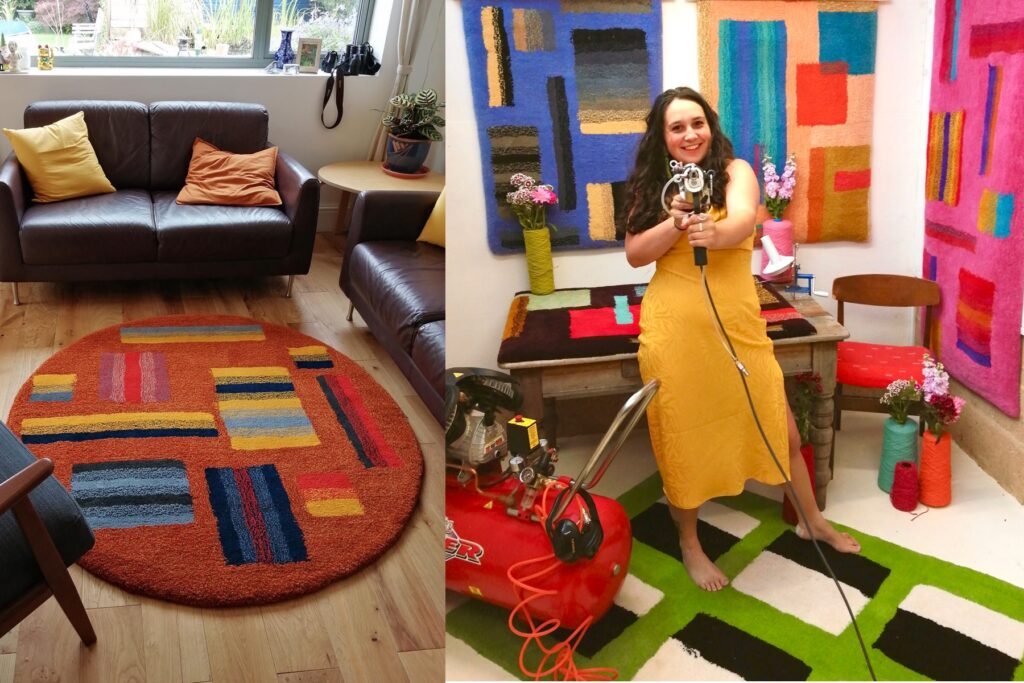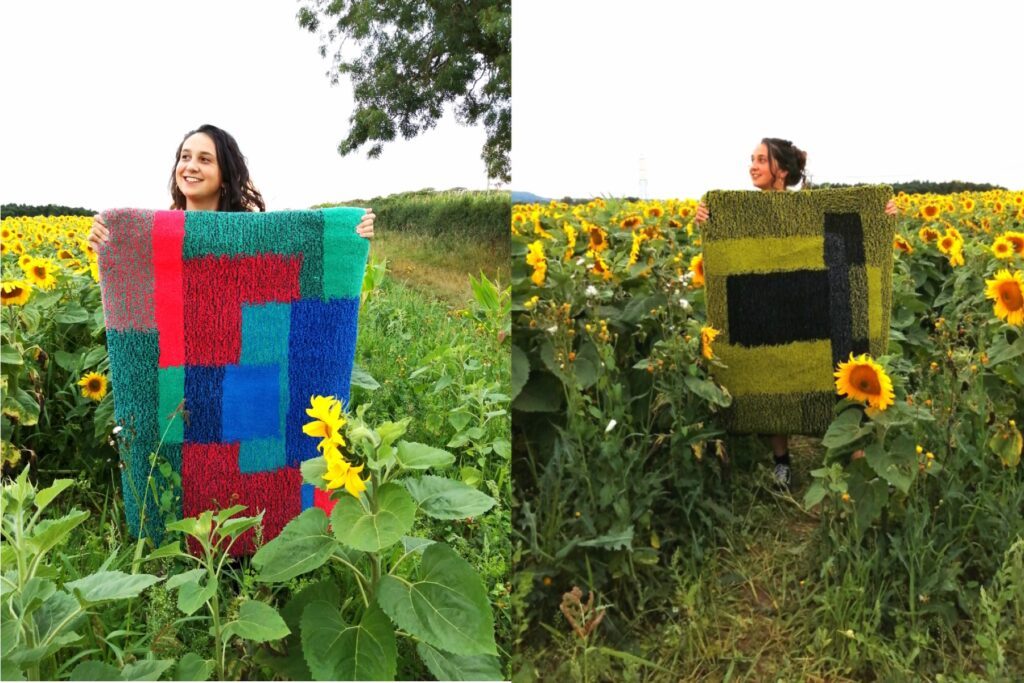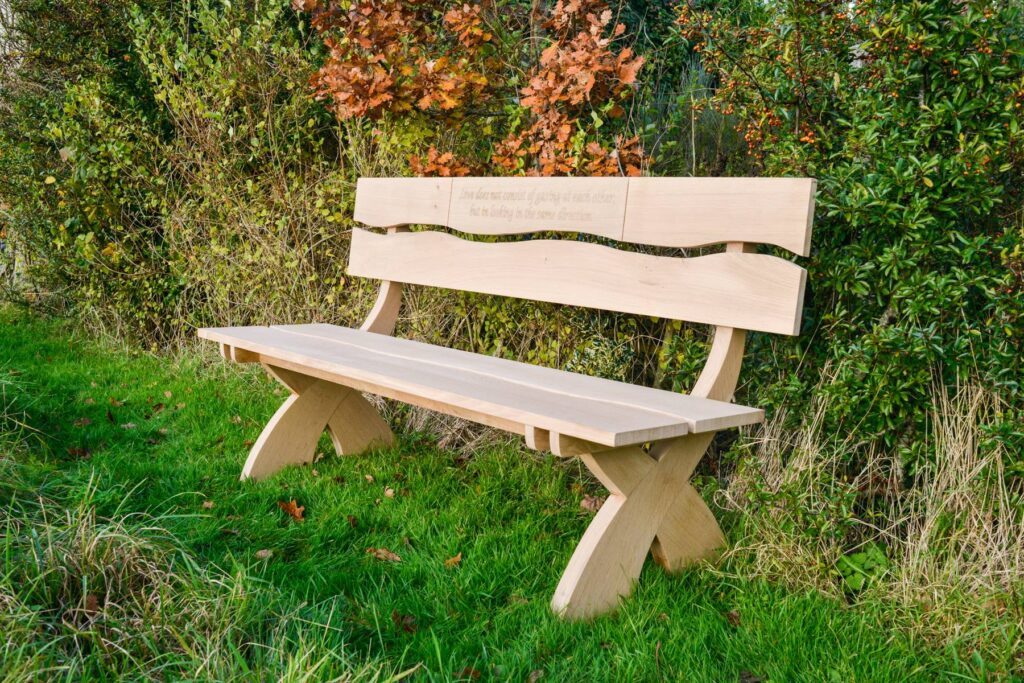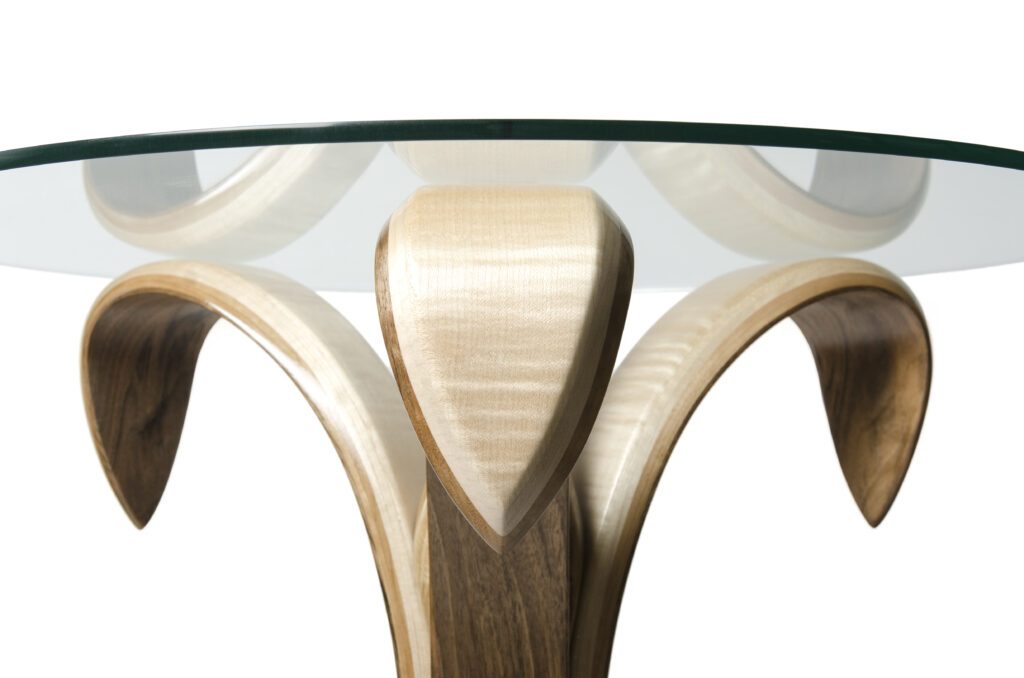Craft commissions can be a fantastic opportunity for any designer maker. Financially, creatively and often also personally! And they can be really good for your profile building too.
From creating a special ethical wedding ring to designing a unique piece of jewellery from old family jewellery. From creating a bespoke piece of handcrafted furniture for a small space to memorials.
Craft commissions build validation, enable more creative thinking and doing and can bring in good income.
But there is often a lot of organising involved … from promoting your craft commission to setting up initial meetings, pricing & negotiating your craft commmissions, ongoing communication with the commissioning client, the legalities, what to look out for and think about and also having something in place should something go wrong. It can be a minefield!
We invited two designer makers to share how they work on craft commissions – to inspire other creatives to think about commissioning work as a creative and profitable income stream.
jessie james of studio tuft
Jessie James runs Studio Tuft a small rug making business. She hand makes bespoke artisan rugs, and likes to think of them as pieces of art for your floor.
Jessie is all about sustainability and hand tufts everything in her studio at the back of her garden using ethically sourced dead stock rug wools. Jessie uses a professional standard tufting gun which is connected to an air compressor which gives her rugs a super luxurious quality feeling pile.
She has been making rugs for 4 years and left her job at the end of 2021 to focus on rug making. Jessie loves choosing the colours when she is making her designs and often draws on holidays abroad and in the UK for inspiration.

When did you start doing craft commissions?
“I have always offered commissions. I now have a whole page on my website dedicated to it but before that I had a little sentence on each product saying that customers could commission this in any size or colour scheme to fit their needs.
I always wanted to be able to customise my products to each person’s home, which is why I offer custom-made rugs rather than stocking infinite colour ways. It’s important to let people know that you do that.
I also like to have a commissions board at the markets I do.“
How do you market your commissions?
“I always try to spread the word that I do commissions and in fact I am about to do a social media push for commissions.
I think that having a graphic that you can re-post is good because its clear what you’re doing and then you can go into depth of the commission process in the caption or using other images.
I have a separate page on my website with a contact form and my email, so people can contact me in any way that they wish. I’m always updating this commissioning page making sure it works for clients and that it is as easy to use as possible.”
How do you protect yourself & your commissioning client?
“I try to get everything in writing so that I can refer back to things. If I have a conversation, I then email back and put what was said into writing.
I like to do a little ‘mock up’ drawing and send an invoice before I start making and once I have the OK on both the price and design I start ordering any extra materials.
I also ask for at least 1/2 the cost up front.
I try to keep it easy, calm and low pressure for the customer. My thinking is that if something goes really wrong at least I can still sell the product so I won’t be losing out.”

How do you price your commissions?
“I charge the same as my ready-made products.
I list prices for some generic sizes on my website so that people have an idea of the cost before reaching out. I think it makes people more likely to contact and actually go through with the commission if they have an idea of the price in their head to begin with. If the client wants me to dye up wools to match swatches, then I will charge extra for that, but otherwise I can use the price structure on my website”.
How do you manage the commissioning process?
“It varies between clients and how they contacted me to begin with. Some customers come to my studio to pick wools and have a look at the designs.
Once it’s all confirmed I often tell them to keep a look out on my Instagram stories as I often post my process there and they will see some parts of it being made.
I then let them know once I get to a certain part in the process (the latexing) and arrange delivery/ confirm delivery date.
If anything untoward happens, I will contact them but apart from that I just let them know when the rug being shipped out”.
What are the benefits of commissions for your business?
“A commission means you know you have income coming in, you’re making something knowing you will be paid for it.
The only problems I have encountered so far are my own fears! I always get super nervous when I send a commission off / deliver it because this is the first time they will be seeing it, but they always love it and it makes it so worth it”.
Any tips for creatives just starting to work on commissions?
“Get all the information you need confirmed before you start making or ordering materials.
Give people time to think and decide, don’t email back after a day. Let them have time and contact them again in a week or so rather than harassing them”.
John Jacques – Radiance Furniture
John Jacques trades as Radiance Furniture. He designs and make original, award winning, beautiful and bold fine furniture from his studio workshop in Wiltshire. He works closely with clients, designers and architects to create beautiful furniture and interior spaces, as well as making one-off and limited edition designs for galleries and exhibitions.

When did you start doing craft commissions?
“When I first started making, I made some pieces for exhibitions but really with a view to getting craft commissions from them.
Obviously selling work that you’ve already made is lovely, but for my kind of work (large, fairly high cost items of furniture), having lots of pieces ready for exhibitions and sales comes with it’s own issues. They take up a lot of space, they can get damaged and scratched and if they don’t sell then that’s an awful lot of time and money down the drain! Working to commission eliminates all of that.”
how Do you market your craft commissions?
“These days I only do commissions and that is made clear in all my media; showing Instagram pictures of my craft commissions, mentioning them on the website and in the various profiles around the internet.
I had to accept that I wasn’t in a position to be too picky about the work I took on. Bills to pay etc!
But from that, I now have some very interesting work coming in! It’s taken over 10 years of hard work and sometimes not knowing when the next pay check will be though…!”
How do you protect yourself & your commissioning client?
“I have a Terms and Conditions page, which I tend to send along with my quotes, although there is a lot of trust necessary in the client/maker relationship!
I always get a deposit to book the time in my diary and cover material costs, and for larger jobs I will get staggered payments during the work too.
I make all of this clear to the client at the beginning and I also check with them that they’re happy with this arrangement. Everyone has been so far….”
How do you price your craft commissions?
“There is no easy answer to this!
I asked a lot of established furniture makers this same question when I started and they all said the same – it’s difficult!
The equation is of course – ‘time + material costs + expenses + profit (if you can add that without making it too expensive for the client)’.
Working that all out before you actually do the work, especially when it’s something you haven’t made before, is tricky and really only gets easier with experience.
My advice is try and break down the making process and list all expected hours. Then once it’s been accepted and you’ve got started on it, forget about the money over time equation and just do a good job.
And modify the next quote if necessary.”

How do you manage the commission process?
“I generally have a meeting to talk about what the clients wants, then I try and let them know an estimate of cost OR get a budget from them. This is essential otherwise there can be a lot of wasted time working on designs that are beyond the budget of the job. Clients are disappointed that what they’ve been looking at is unaffordable, everyone is disappointed!
I go in with an attitude of wanting to help the client achieve their goal. I ask them to send me any images of pieces they’ve seen that they like the look of. I may go back a few times to discuss design, detail and ‘check’ measurements (and take ones I forgot to take on previous visits!).
One issue is not putting too much time into it before getting a budget established and getting some kind of a payment for the design work.
If it’s a definite, I’ll get a 50% deposit or if the clients are not sure about going ahead yet, I’ll ask for a couple of days worth of fees to cover the design process. Mostly everyone is fine with that”.
Any tips for new creatives just starting to work on craft commissions?
“Just do your best each time.
Be nice and helpful and if a client has a vision, go with it. I think when someone has a vision (an idea, a plan that they can see in their minds eye) it’s probably good, even if I can’t see it myself. I like the process of bringing a vision into existence”.
We’d love to hear your tips for managing, pricing & promoting your craft commissions too. Please share them in the comments section below.
Want to learn how to price, manage & promote your own creative commissions? Check out our Creative Commissions online course here.
Share your questions and comments